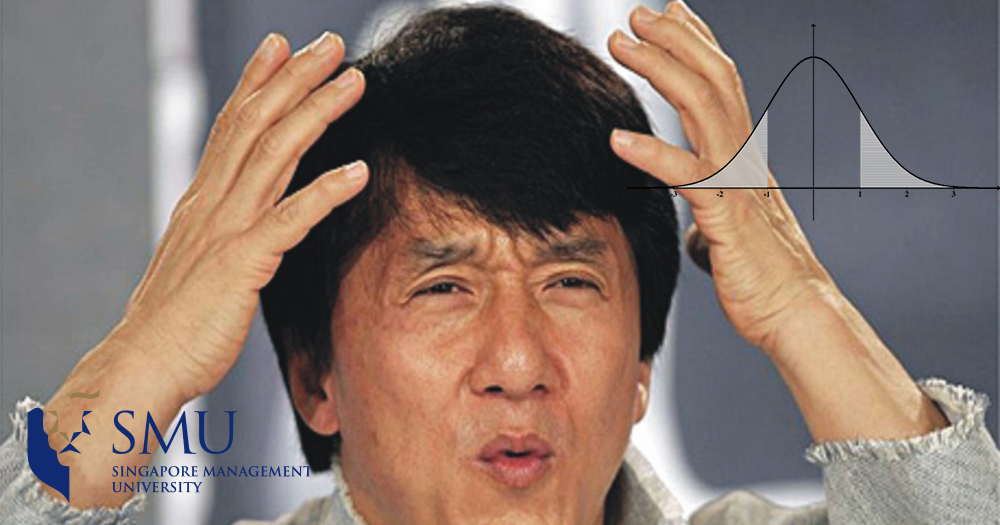A Singapore Management University (SMU) professor recently made the news after he decided to give all 169 of his students the A grade.
Bogus grades at SMU
A May 25 Straits Times report said SMU responded by labelling the grades awarded by business professor Stefano Harney as "bogus" and reviewing the grades themselves.
 Stefano Harney
Stefano Harney
Speaking to ST, a SMU spokesperson said "the university has in place strict protocols with regard to grading and takes a serious view when protocols are not adhered to".
And while the university has denied that it uses a bell curve to distribute grades, Harney has said that guidelines provided to professors "are really rules -- that no matter how many students do well, the number of As is strictly limited to a third of the class".
Grading on a curve
The incident has sparked a discussion over the practice of grading on a curve and the moderation of academic grades, which is used to various degrees at educational institutions all the way from primary schools to universities.
A typical system of grading on a curve might restrict the number of A's given out to 20 percent, number of B's allocated at 60 percent, and the number of C's capped at 20 percent as well.
This means that instead of receiving an absolute grade based on how one performed, the grade received is calculated by comparing one's performance to that of the other students in class.
Rethinking the system
One ST forum letter, written by a student named Sean Lim Wei Xin and published on June 1, argued for a rethink when it comes to this system.
Lim wrote that grading on a curve promotes a "zero-sum game" where students must outperform their peers to achieve good grades.
"Such a regime is unhealthy as it promotes a dog-eat-dog learning culture, something that society and the Government have pledged to alleviate in recent years."
He also described his own experience as a student on exchange in Uppsala, Sweden, where the bell curve grading system is not used and students instead receive grades "that reflect their actual performance".
It was, he said, a different experience and learning outcome as compared to Singapore:
"As a result, I observe that students here are more helpful and forthcoming towards their peers in terms of sharing of knowledge, very unlike in Singapore where students do not help because they fear that their peers might eventually do better than them."
According to Lim, continuing to employ a bell curve system of grading will stymie any attempt to soften an overly competitive educational system.
Lim's argument is not revolutionary.
Many academics, economists, and scholars have previously argued against the use of grading on a curve and other similar systems.
A disincentive to study
In a New York Times opinion piece from 2016, Adam Grant -- an organisational psychologist and professor at the Wharton School of the University of Pennsylvania -- criticised how grading curves arbitrarily limited the number of students who can excel.
He also cited a study by two economists which concluded that "a forced grade curve is a disincentive to study".
Grant expands on the effects of the ultra-competitive zero-sum game mentality, positing that in the workplace collaboration and willingness to help others yields better long term results.
Fairer outcomes with the curve
However, there are also valid reasons for the use of a curve while grading, with American legal scholar Eugene Volokh writing in The Washington Post about how it can produce fairer outcomes.
"The absence of a curve is unfair to a class that has an unusually harsh professor (which includes a class that has a professor who grades in a way that you see as fair, but that is harsh compared to other unusually lenient professors)."
Volokh is a professor of Law at the University of Southern California, Los Angeles.
What you make of it
Grading on a curve during university does sufficiently punish the chronically lazy and less hardworking.
The bell curve grading system does ensure that those who do get good grades managed to do so not out of luck or sheer randomness, or by picking the right modules or lecturer semester after semester.
From the perspective of students the only recognisable downside is that greater competition among the higher echelons of grade-getters is real.
Top image collage from Imgflip, Kissclipart, and Singapore Management University Facebook
If you like what you read, follow us on Facebook, Instagram, Twitter and Telegram to get the latest updates.
